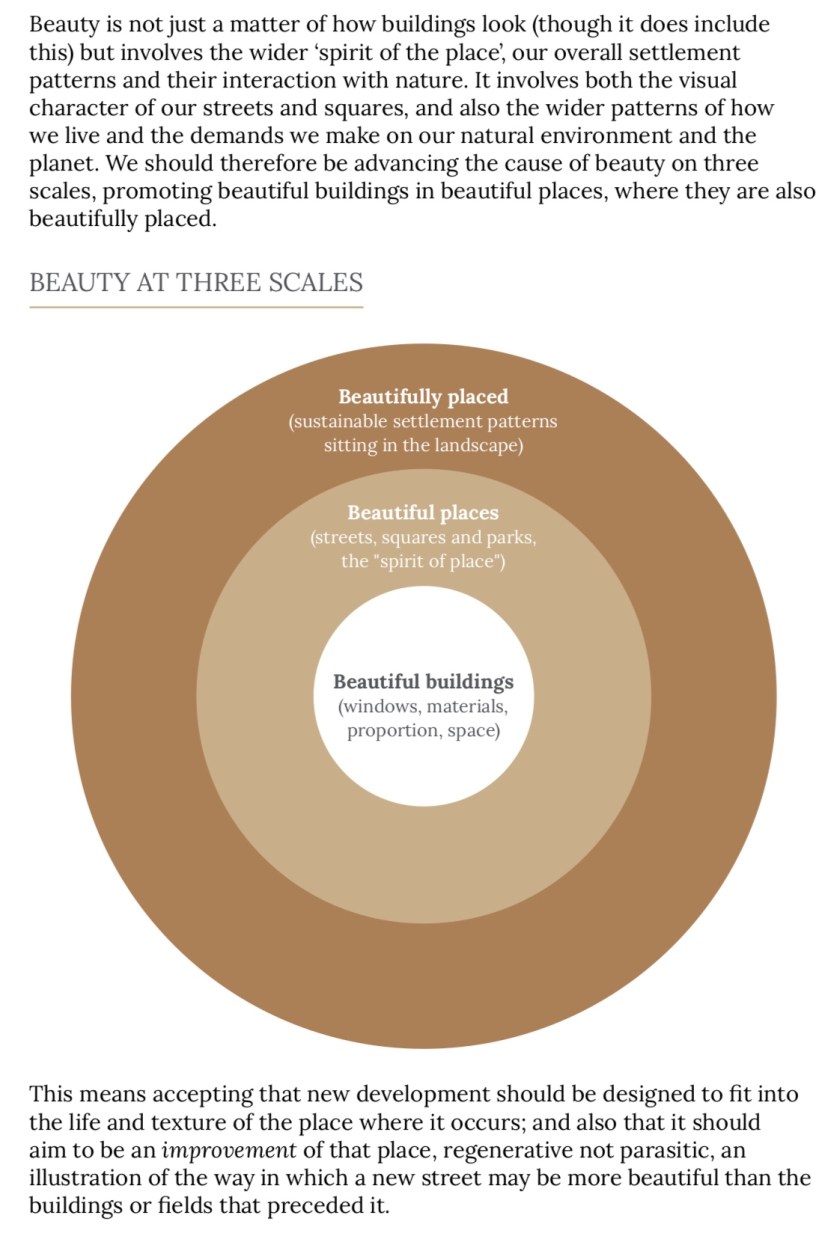Government is consulting on the “design and delivery” of First Homes. The deadline for responses is 3 April 2020. First Homes was of course a manifesto pledge and so there are no questions as to whether the concept itself is supportable or indeed practical.
That is a shame, given the failure of the Starter Homes initiative after so much work and public expenditure. As explained in my 4 March 2017 blog post Definitely Maybe: Defining Affordable Housing, an elaborate structure was arrived at by way of chapter 1 of the Housing and Planning Act 2016 and a technical consultation by the Government in March 2016:
– a legal requirement that 20% of new homes in developments should be starter homes, ie
⁃ to be sold at a discount of at least 20% to open market value to first time buyers aged under 40.
⁃ Price cap of £250,000 (£450,000 in London)
– The restriction should last for a defined number of years, the first suggestion being five years, replaced with the concept of a tapered restriction to potentially eight years
– Commuted sums in lieu of on site provision for specified categories of development, eg build to rent.
The Government’s response to the technical consultation then significantly watered down the starter home concept, to the extent that the legislation was surplus to requirements (it is still on the statute book, just left hanging):
– There would be no statutory requirement on local planning authorities to secure starter homes, just a policy requirement in the NPPF, which was to be amended accordingly.
– Rather than requiring that 20% of new homes be starter homes, the requirement would be that 10% of new homes will be “affordable housing home ownership products” so could include shared equity or indeed low cost home ownership.
– maximum eligible household income of £80,000 a year or less (or £90,000 a year or less in Greater London
– 15 year restriction
– No cash buyers, evidence of mortgage of at least 25% loan to value
– Only be applicable to schemes of ten units or more (or on sites of more than 0.5h).
The only reference to starter homes in the February 2019 version of the NPPF is in the glossary’s definition of affordable homes:
“b) Starter homes: is as specified in Sections 2 and 3 of the Housing and Planning Act 2016 and any secondary legislation made under these sections. The definition of a starter home should reflect the meaning set out in statute and any such secondary legislation at the time of plan-preparation or decision-making. Where secondary legislation has the effect of limiting a household’s eligibility to purchase a starter home to those with a particular maximum level of household income, those restrictions should be used.”
Paragraph 64 of the NPPF of course requires:
“Where major development involving the provision of housing is proposed, planning policies and decisions should expect at least 10% of the homes to be available for affordable home ownership, unless this would exceed the level of affordable housing required in the area, or significantly prejudice the ability to meet the identified affordable housing needs of specific groups. Exemptions to this 10% requirement should also be made where the site or proposed development:
a) provides solely for Build to Rent homes;
b) provides specialist accommodation for a group of people with specific needs (such as purpose-built accommodation for the elderly or students);
c) is proposed to be developed by people who wish to build or commission their own homes; or
d) is exclusively for affordable housing, an entry-level exception site or a rural exception site.”
Going back to the NPPF affordable housing definition, aside from starter homes the other two listed categories of affordable home ownership are:
“c) Discounted market sales housing: is that sold at a discount of at least 20% below local market value. Eligibility is determined with regard to local incomes and local house prices. Provisions should be in place to ensure housing remains at a discount for future eligible households.
d) Other affordable routes to home ownership: is housing provided for sale that provides a route to ownership for those who could not achieve home ownership through the market. It includes shared ownership, relevant equity loans, other low cost homes for sale (at a price equivalent to at least 20% below local market value) and rent to buy (which includes a period of intermediate rent). Where public grant funding is provided, there should be provisions for the homes to remain at an affordable price for future eligible households, or for any receipts to be recycled for alternative affordable housing provision, or refunded to Government or the relevant authority specified in the funding agreement.”
Of these different affordable home ownership options (using the Government jargon, I appreciate that what is “affordable” is an open question), starter homes were abandoned by the Government as a concept after a huge amount of money and time had been spent. The National Audit Office’s Investigation into Starter Homes (4 November 2019) found as follows:
“In April 2015, the Conservative Party manifesto committed to “200,000 Starter Homes, which will be sold at a 20% discount and will be built exclusively for first-time buyers under the age of 40”. The November 2015 Spending Review subsequently provided £2.3 billion to support the delivery of 60,000 Starter Homes (of the 200,000 previously announced). The Housing and Planning Act (2016) set out the legislative framework for Starter Homes and the Department ran a consultation on Starter Homes Regulations (the regulations) between March and June 2016.
Between 2015 and 2018, government’s policy towards Starter Homes shifted.
In May 2018, the Minister of State for Housing and Planning stated that the government had spent an estimated £250 million of the Starter Homes Land Fund. In July 2018, the Department clarified that it had spent £250 million buying land to build affordable properties from two funds, the Starter Homes Land Fund and the Land Assembly Fund, with work under way to get the land ready for development, but that building had not yet started.”
“No Starter Homes have been built to date.”
“The Starter Homes legislative provisions are not yet in force.”
“The Department no longer has a budget dedicated to the delivery of Starter Homes.”
“Between 2015-16 and 2017-18, the Department spent almost £174 million preparing sites originally intended for building Starter Homes.”
“In 2015-16, Homes England spent £15.4 million of the Starter Homes 2015 funding preparing brownfield land.”
“Since August 2015 the Department has spent £6.45 million supporting local authorities through the Programme.”
“In 2016-17 and 2017-18, the Department spent £151 million under the
[Starter Homes Land Fund], but the spending has not supported the building of Starter Homes.”
“In 2017-18, the Department spent £97 million from the SHLF, but under [Land Assembly Fund] criteria, on acquiring land needing work and preparing it for the market”
No doubt some of the monies earmarked for starter homes may have ended up going towards other housing and affordable housing initiatives (I am not clear on that) but surely what an embarrassment this is for whoever first came up with the bright idea that was starter homes.
However, moving on from that failure, of course the thing to do is to learn from past mistakes? Why didn’t it work? What could have been done better? This is the essence of “black box thinking”. I was certainly not the only one pointing out the potential complexities that might prove its downfall (See my 21 June 2016 blog post Valuing Starter Homes).
But of course there is a insatiable political hunger for new ideas for manifestos, and in the December 2019 Conservative manifesto a concept of First Homes was trumpeted as the new solution to “making the dream of home ownership a reality for everyone” (to quote from the latest consultation document).
The initiative was formally launched on 7 February 2020 with a one page guide and more detailed consultation document.
The headlines are set out in the guide:
• First Homes are flats and houses built on developments up and down the country. They will be no different from other properties except they will be sold with a discount of at least 30 percent.
• They will be sold to local people who want to stay in the community where they live or work but are struggling to purchase a home at market prices.
• They will be prioritised for first-time buyers, serving members and veterans of the Armed Forces, and key workers, such as nurses, police and teachers.
• The discount will be passed on to future buyers when First Homes are resold so more people can be helped onto the ladder.
Jennie Baker at Lichfields has written an excellent summary First Homes: discounted market housing that actually delivers? (10 February 2020).
There has been widespread concern as to whether this new product (however it may be delivered – and there is going to be a statutory or policy requirement for it to be provided as part of the housing tenure mix on major schemes) will be at the expense of other more needed or more efficient affordable housing products (see for instance the piece by Ruth Davison, chief executive of Islington and Shoreditch Housing Association, First Homes won’t extend homeownership and will decimate supply of homes for those most in need) and of course not “affordable” for many (see for instance Shelter’s comments in the 16 February 2020 Guardian piece Discounted housing scheme out of reach of most first-time buyers) and I personally see as many potential valuation pitfalls as identified with starter homes – and surely there is a greater difficulty “selling” a discount product to purchasers where, unlike with starter homes, that discount will remain in perpetuity.
If you are not now going to MIPIM, why not consider the questions in the consultation paper instead? They neatly encapsulate many of the current uncertainties as to how this is all going to work:
Q1.
a) Do you agree with a minimum discount of 30% (but with local flexibility to set a higher one)?
b) If not, what should the minimum discount be? i. 20%
ii. 40%
iii. Other (please specify)
Q2.
a) Should we set a single, nationally defined price cap rather than centrally dictate local/regional price caps?
b) If yes, what is the appropriate level to set this price cap? i. £600,000
ii. £550,000 iii. £500,000 iv. £450,000
v. Other (please specify)
Q3.
a) If you disagree with a national price cap, should central Government set price caps which vary by region instead?
b) If price caps should be set by the Government, what is the best approach to these regional caps?
i. London and nationwide
ii. London, London surrounding local authorities, and nationwide
iii. Separate caps for each of the regions in England iv. Separate caps for each county or metropolitan area
v. Other (please specify)
Q4.
Do you agree that, within any central price caps, Local Authorities should be able to impose their own caps to reflect their local housing market?
Q5.
Do you agree that Local Authorities are best placed to decide upon the detail of local connection restrictions on First Homes?
Q6.
When should local connection restrictions fall away if a buyer for a First Home cannot be found?
i. Less than 3 months
ii. 3 – 6 months
iii. Longer than 6 months
iv. Left to Local Authority discretion
Q7.
In which circumstances should the first-time buyer prioritisation be waived?
Q8.
a) Should there be a national income cap for purchasers of First Homes?
b) If yes, at what level should the cap be set?
c) Do you agree that Local Authorities should have the ability to consider people’s income and assets when needed to target First Homes?
Q9:
Are there any other eligibility restrictions which should apply to the First Homes scheme?
Q10.
a) Are Local Authorities best placed to oversee that discounts on First Homes are offered in perpetuity?
b) If no, why?
Q11.
How can First Homes and oversight of restrictive covenants be managed as part of Local Authorities’ existing affordable homes administration service?
Q12.
How could costs to Local Authorities be minimised?
Q13.
Do you agree that we should develop a standardised First Home model with local discretion in appropriate areas to support mortgage lending?
Q14.
Do you agree that it is appropriate to include a mortgage protection clause to provide additional assurance to lenders?
Q15.
For how long should people be able to move out of their First Home and let it out (so it is not their main or only residence) without seeking permission from the Local Authority?
i. Never
ii. Up to 6 months
iii. 6- 12 months
iv. Up to 2 years
v. Longer than 2 years vi. Other (please specify)
Q16.
Under what circumstances should households be able to move out of their First Home and let it for a longer time period? (Tick all that apply)
i. Short job posting elsewhere
ii. Deployment elsewhere (Armed Forces)
iii. Relationship breakdown
iv. Redundancy
v. Caring for relative/friend
vi. Long-term travelling
vii. Other (please specify)
Q17.
Do you agree that serving members and recent veterans of the Armed Forces should be able to purchase a First Home in the location of their choice without having to meet local connections criteria?
Q18.
What is the appropriate length of time after leaving the Armed Forces for which veterans should be eligible for this exemption?
i. 1 year
ii. 2 years
iii. 3-5 years
iv. Longer than 5 years
Q19.
Are there any other ways we can support members of the Armed Forces and recent veterans in their ability to benefit from the First Homes scheme?
Q20.
Which mechanism is most appropriate to deliver First Homes?
i. Planning policy through changes to the National Planning Policy Framework and guidance
ii. Primary legislation supported by planning policy changes
Q21.
Which do you think is the most appropriate way to deliver First Homes?
i. As a percentage of section 106 affordable housing through developer contributions
ii. As a percentage of all units delivered on suitable sites
Q22.
What is the appropriate level of ambition for First Home delivery?
i. 40% of section 106
ii. 60% of section 106
iii. 80% of section 106
iv. Other (please specify
Q23.
Do you agree with these proposals to amend the entry-level exception site policy to a more focused and ambitious First Homes exception site policy?
Q24.
a) Do you think there are rare circumstances where Local Authorities should have the flexibility to pursue other forms of affordable housing on entry-level exception sites, because otherwise the site would be unviable?
b) If yes, what would be an appropriate approach for Local Authorities to demonstrate the need for flexibility to allow other forms of affordable housing on a specific entry- level exception site?
Q25.
What more could the Government do to encourage the use of the existing rural exception site policy?
Q26.
What further steps could the Government take to boost First Home delivery?
Q27.
Do you agree that the proposal to exempt First Homes from the Community Infrastructure Levy would increase the delivery of these homes?
Q28.
Do you think the Government should take steps to prevent Community Infrastructure Levy rates being set at a level which would reduce the level of affordable housing delivered through section 106 obligations?
Q29.
a) What equality impacts do you think the First Homes scheme will have on protected groups?
b) What steps can the Government take through other programmes to minimise the impact on protected groups?
Q30.
Do you have any other comments on the First Homes scheme?
Obviously there is a place for discount to market “for sale” products, as part of the affordable housing mix on a major project, and obviously local connection/key worker restrictions need to play an important role, but let’s
⁃ be really careful that the First Homes concept does not squeeze out other affordable housing options for which there may be greater need, or through inefficiency place a greater strain on project viability and consequently the overall monies available for affordable housing
⁃ ensure that the regime is loophole-proof, straight-forward and fair, however mutually inconsistent those aspirations may be (cf CIL)
⁃ (above all else) learn from that Starter Homes failure.
Simon Ricketts, 29 February 2020
Personal views, et cetera






